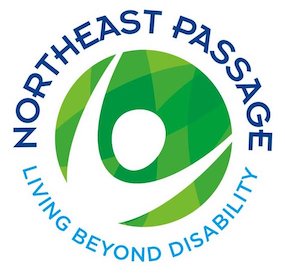
Many industry professionals are familiar with adaptive sport clinics and retreat style programs that provide injured veterans with opportunities to reengage in sport and nature-based recreation while also experiencing camaraderie and teamwork.
For many veterans though, actually getting to these programs is overwhelming due to a blend of individual circumstances, disability, and available support systems. For others, recreating feelings of success and connection back in their community is difficult, and they continue to struggle.
Northeast Passage (NEP) at the University of New Hampshire has created a model of community-based recreational therapy (C-BRT™) to assist injured veterans with developing community connections and sustained recreation engagement in their daily environment. This model, previously known as PATH™ (Promoting Access, Transition, and Health) has been an active part of veteran health solutions in NH since 2005. Last year NEP served 139 veterans with this model. A body of published work and recent research outcomes can be found below under Additional Resources.
NEP believes that a continuum of community-based recreation therapy services is necessary to meet veterans at all needed levels of support. In addition to ongoing veteran recreation events focused on participation, NEP works with their local VAMC to offer the C-BRT model of 1:1 goal-based work with injured veterans in their own home and local community to address the environmental, and personal factors that keep injured veterans from engaging and thriving.
Beyond understanding impact of disability and other factors, C-BRT™ therapists work with injured veterans in the initial assessment to identify: valued health changes/goals, individual and environmental strengths and resources, and recreation interests.
In follow-up visits, C-BRT™ certified recreation therapists use the context of recreation/community engagement to facilitate development of functional skills, solutions, and individual confidence to create sustainable patterns that support desired health changes.
To see the C-BRT™ (formerly PATH™) model in action check out, Eric’s Story, Harry’s Story.
This model has been supported and refined over the years by grant funding from VA, the Bob Woodruff Foundation, and Operation Hat Trick. Based on successful outcomes of this intervention across disability groups, NEP in interested in expanding access to this successful intervention for veterans across the country. Efficacy during growth of this model is important. This year, NEP has received grant funding from the Bob Woodruff Foundation to implement a pilot training and mentorship program to support licensed use of this model by other agencies in VISN I.
Additional Resources:
PATH Infographic, PATH Poster, TR Journal
To learn more, reach out to Cathy Thompson, cathy.thompson@unh.edu


